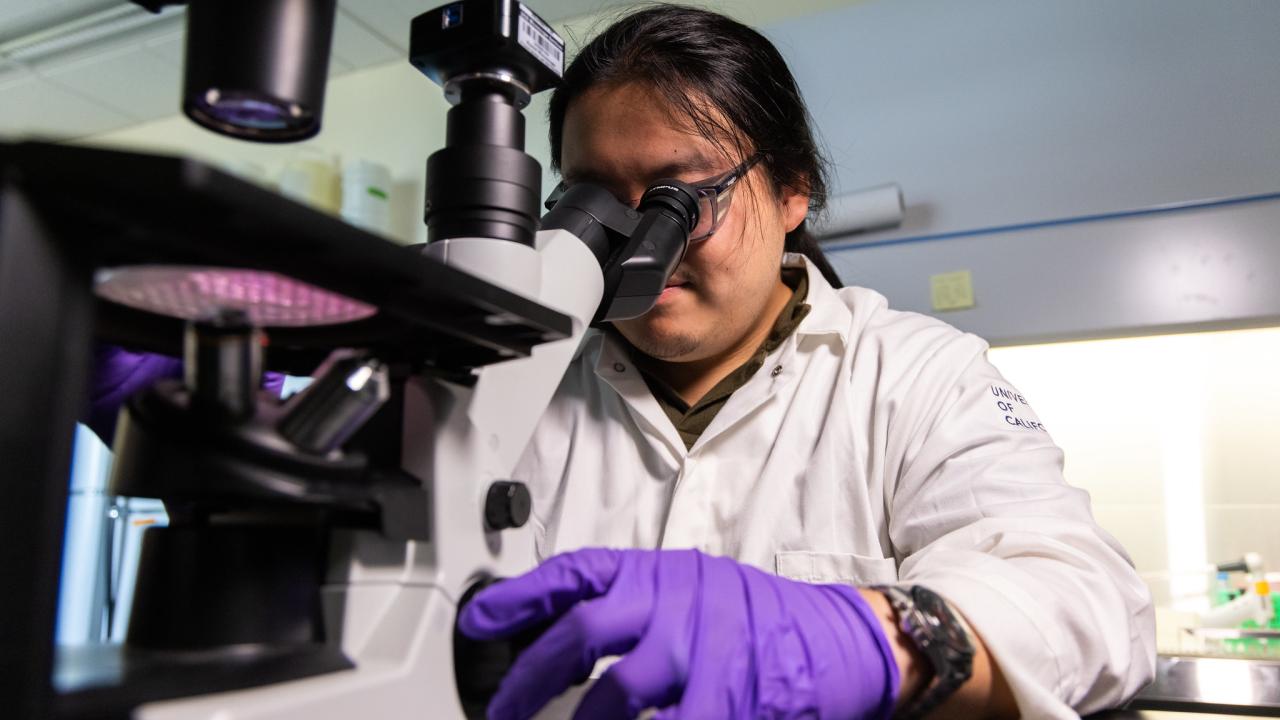
Bryan Wijaya Is Bringing Cultivated Meat to Market
In high school, Bryan Wijaya read about scientist Mark Post, who made the first cultivated meat product (a hamburger) from animal cells in 2013 at the cost of $325,000. The industry speculated about a future of food replicators and eating steaks on demand, but it seemed more like science fiction at the time with no real traction.
It wasn’t until after graduating with his Bachelor of Science in chemical engineering from the Georgia Institute of Technology in 2020 that Wijaya revisited that initial interest in cultivated meat. Wijaya had returned to Singapore, where he grew up, and was reverse-engineering recipes for a company there.
During that job, his aunt attended an event hosted by Just, a San Francisco-based startup that had been approved to start selling its cell-grown chicken in Singapore and connected Wijaya with the company’s executive chef. He encouraged Wijaya to revisit the now quickly growing industry.


Wijaya saw a future in conducting groundbreaking research and developing new techniques and methodologies for the industry and decided to pursue a Ph.D. He looked into papers that had been published and research being done and found David Block, a professor of chemical engineering at the University of California, Davis, whose Cultivated Meat Consortium, had just won a National Science Foundation grant.
Soon after, Wijaya joined UC Davis as a Ph.D. student in chemical engineering and is now researching cultivated meat in Block’s new Integrative Center for Alternative Meat and Protein, or iCAMP (the successor of the Cultivated Meat Consortium), which investigates how to fill the looming gap between global demand and supply for meat with alternative meats, including plant-based, fungi and fermentation-based and cultivated meat.
Specifically, Wijaya aims to find simpler sources of media components — media being the nutrient solution in which the meat cells grow — so the media can be minimally processed and cheaper to scale up for mass production.
Once the team hits price parity with conventional meat, cultivated meat could be on grocery store shelves next to the farm-raised all-beef burger patties and hot dogs.
From Cells to Meat to Shelves (Eventually)
To make meat from cells, the first thing you need is, well, cells.
Wijaya gets his beef cells from the UC Davis Meat Lab via another laboratory that isolates the cells from meat trimmings. The cells are brought to Wijaya in Block’s lab, where they are grown in cell culture flasks. The flask is then filled with media, a solution comprising more than 50 components (sometimes up to 100), including amino acids, sugars, vitamins and minerals — everything a cell needs to grow.
Then, Wijaya waits.
It takes about a week for the cells to grow enough to be transferred to a bioreactor, where the cells will continue to be cultivated until there is enough product to make what Wijaya calls “unstructured product,” or the basis for a ground meat product like hot dogs, hamburgers or meatballs.


The process is pretty straightforward, but currently, the media used to grow these cells costs anywhere from $50 to $100 per liter. Wijaya’s goal is to get that cost down to below $1 per liter, which would allow companies to produce cultivated meat to scale at an affordable rate that would then be passed on to consumers.
Wijaya is investigating using agricultural bioproducts like yeasts and plants in the media instead of highly purified amino acids as a source of nitrogen. This should make the media less expensive. He is also looking into how much processing plants and yeasts, which are natural sources of amino acids, would need to use them in media, as well as how different combinations of ingredients affect cell growth and including or excluding certain components to analyze what a component is doing.
It’s a difficult task to tackle, Wijaya says. Because this process is still in such early stages, part of his time is spent figuring out what is the best way to analyze these media products.
“We have all these media components, but only one thing to analyze them with, which is how the cells are performing,” he said. “It’s really hard to piece out the single things that are affecting it.”
Wijaya hints that there are a couple of components that seem promising, but there is nothing concrete yet. The field is a new frontier for food, which is exciting for Wijaya because all the research is novel and new. The flip side is that there is very limited previous data to go on.
However, the current momentum to make cultivated meat available to the public is extremely strong, even though it may take years.
“I think in the next 20 years, we'll see more and more of these products,” he said. “And that will be interesting to see: Like in the future, I walk into a supermarket, see some product and realize I helped make that product or they're using one of my research ideas.”
From Family Recipes to Feeding the Future
While it was not always his goal to study cultivated meat, Wijaya says the research fuses his passions for science and food, which was always a part of his life. Wijaya, who is of Indonesian heritage and grew up in Singapore, remembers the traditional Singaporean and Indonesian dishes his nanny would cook, like beef rendang (a slow-cooked curry) and soto ayam (an Indonesian chicken noodle soup).
Now, Wijaya is building meat up from cells to help feed a growing world. And while cultivated meat might not be the only solution to a global problem, Wijaya believes it could be one piece to the puzzle.
“World population is expected to reach 10 billion in the next 20 to 30 years. We’re going to really run into the issue of how to feed everyone. It might not be the only solution, but I really think that cultivated meat offers an opportunity to offset the problem.”
